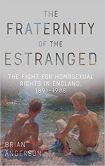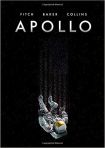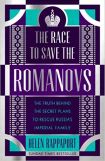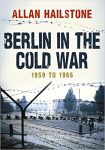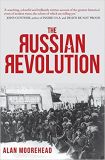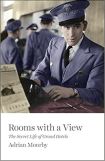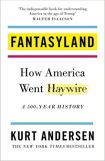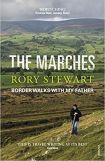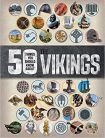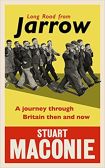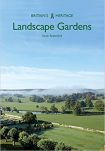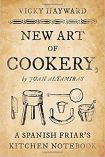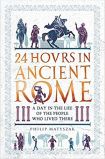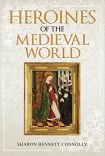|
|
The Fraternity of the Estranged: The Fight for Homosexual Rights in England, 1891-1908 by Brian AndersonOriginally passed in 1885, the law that had made homosexual relations a crime remained in place for 82 years. But during this time, restrictions on same-sex relationships did not go unchallenged. Between 1891 and 1908, three books on the nature of homosexuality appeared. They were written by two homosexual men: Edward Carpenter and John Addington Symonds, as well as the heterosexual Havelock Ellis. Exploring the margins of society and studying homosexuality was common on the European Continent, but barely talked about in the UK, so the publications of these men were hugely significant – contributing to the scientific understanding of homosexuality, and beginning the struggle for recognition and equality, leading to the milestone legalisation of same-sex relationships in 1967. Full Review |
|
|
Apollo by Matt Fitch, Chris Baker and Mike CollinsThis incredible graphic novel is a love letter to the Moon landings and the passion for the subject drips off every Apollo by Matt Fitch, Chris Baker and Mike Collins. This is a story we know well and because of this the authors take a few narrative shortcuts knowing that we can fill in the blanks. These shortcuts are the only downside to the book. If you've ever read a comic book adaptation of a film you will be familiar with the slight feeling that there are scenes missing and that dialogue has been trimmed. This is a graphic novel that could easily have been three times as long and still felt too short. Full Review |
|
|
G Engleheart Pinxit 1805: A year in the life of George Engleheart by John WebleyGeorge Engleheart was one of the leading portrait miniaturists of Georgian London, with a career lasting from the 1770s to the Regency era. He was also one of the most prolific, painting nearly 5,000 miniatures altogether (over twenty of them being of King George III). Throughout most of that time he carefully recorded the names of each of his clients, and subsequently transcribed them into what is referred to as his fee book. Full Review |
|
|
The Race to Save the Romanovs: The Truth Behind the Secret Plans to Rescue Russia's Imperial Family by Helen RappaportThe basic facts about the deaths of Nicholas and Alexandra, some of which were deliberately obscured at the time for various reasons, have long since been established. For the last few months of their lives in Russia the former Tsar and Tsarina, their children and few remaining servants, were held in increasingly squalid, humiliating captivity. To prevent them from being rescued, in July 1918 the revolutionary regime had them all shot and bayoneted to death in circumstances which, once the news was confirmed beyond all doubt, horrified their relatives in Europe. Full Review |
|
|
The Great Horizon: 50 Tales of Exploration by Jo WoolfJo Woolf has compiled a brilliant set of fifty short insights into the lives and achievements of some amazingly brave people. Their fearless journeys have helped us unlock many of the mysteries of the wildest parts of our world, and also given us an understanding of what it is like to be faced with the most terrible conditions and still have the determination and grit to carry on. This book could be viewed as a taster which encourages us to seek out and read more about some of the most iconic explorers. Their stories are pretty incredible and Woolf does them justice. Full Review |
|
|
Berlin in the Cold War: 1959 to 1966 by Allan HailstoneBerlin in the Cold War: 1959-1966 contains almost 200 photographs taken by author / photographer Allan Hailstone in his visits to the city during this period. The images provide an insight into the changing nature of the divide between East and West Berlin and a glimpse into life in the city during the Cold War. Full Review |
|
|
The Russian Revolution by Alan MooreheadThe author was writing from a slightly different stance from most other historians. Only a decade after the end of the Second World War, he was basing his account on the premise that the Nazis' rise to power in Germany was connected with the heritage that Lenin had left behind, and that without Stalin's assurances of support Hitler would never have dared to plunge the world into such a devastating global conflict. It was his belief that America's post-war commitments in Europe and the Far East, and other post-1945 developments, could also be traced back to the events of 1917. Much of his material came from German archives which were saved from destruction when the Third Reich was on the brink of collapse. These documents that the German government would have kept private had they won the war provided full detail on the attempts of their forebears to pave the way for chaos and revolution in their Asiatic neighbour.Full Review |
|
|
Rooms with a View: The Secret Life of Great Hotels by Adrian MourbyAdrian Mourby has given us a flying visit to each of fifty grand hotels, from fourteen regions of the world, with the hotels in each section being arranged chronologically rather than by region, which helps to give something of an overall picture. So what makes a hotel 'grand'? The first hotel to call itself 'grand' was in covent Garden in 1774 and it ushered in the beginning of a period when a hotel would be a lifestyle choice rather than a refuge for those without friends and family conveniently nearby. The hotels we visit all began life in different circumstances and each faced a different set of challenges. We begin in the Americas, move to the United Kingdom, circumnavigate Europe, briefly visit Russia and Turkey then northern Africa, India and Asia. Australia, it seems, does not go for the grand. Full Review |
|
|
Fantasyland by Kurt AndersenFantasyland covers the history of America from 1517 to 2017 in awesome detail. Covering five centuries of tempestuous history, Andersen paints the conjuring of America in vivid relief. Discussing everything from pilgrims to politicians, the exhilarating gold rush to alternative facts, seminal episodes are explored in forensic detail with razor sharp wit. Full Review
|
|
|
Tea Gardens (Britain's Heritage Series) by Twigs WayTea Gardens really began in London in the late 18th century: a trip to Kings Cross or St Pancras was effectively a trip to the country in those days. Men had their coffee houses, but they were not places where women could or would be seen. Tea was introduced to England in the 17th century but it was not until 1784 that the high duty was reduced from 119% to 12½% and tea became the drink of choice for the nation. Until then the working classes had been fuelled largely by cheap gin. Only, where would this beverage be drunk? One answer was the pleasure gardens where the fashionable went to see and be seen: by the mid 1600s tea was also being served in places such as Ranelagh Gardens. Full Review |
|
|
The Marches by Rory StewartThe Observer quote on the front of the paperback edition of Stewart's latest book observes This is travel writing at its finest. Perhaps, but to call it travel writing is to totally under-sell it. This is erudition at its finest. Stewart has the background to do this: he had an international upbringing and followed his father in both the Army and the Foreign Office, and then (to his father's, bemusement, shall we say) became an MP. Oh, and he walked 6,000 miles across Afghanistan in 2002. A walk along the Scottish borders should be a doddle by comparison. Full Review |
|
|
50 Things You Should Know About the Vikings by Philip Parker
The Vikings have got a lot to own up to. A huge DNA study in 2014 was the first thing that proved to the Orkney residents that they had Viking blood in their veins – they had been insisting it was that of the Irish. The Vikings it was that forced our English king's army to march from London to Yorkshire to kill off one invasion, only to spend the next fortnight schlepping back to Hastings to try and fend off another – and the Normans had the same Norse origin as the first lot, hence the name. There is a Thames Valley village just outside Henley – ie pretty damned far from the coast – that has a Viking longship on its signpost. Yes, they got to a lot of places, from Greenland to Kiev, from Murmansk to Turkey and the Med, and their misaligned history is well worth visiting – particularly on these pages. Full Review |
|
|
Long Road From Jarrow by Stuart MaconieI cancelled my Country Walking magazine subscription about a year ago and the only thing I miss is Stuart Maconie's column. His down-to-earth approach and sharp wit belie an equally sharp intellect and a soul more sensitive than he might be willing to admit. Let's be honest, though, I picked this one up because of someone else's review, in which I spotted names like Ferryhill and Newton Aycliffe. Places I grew up in. Like Maconie I have no connection (that I know of) to the Jarrow Crusade but when he talks about it being a whole matrix of events reducible to one word like Aberfan, Hillsborough, or Orgreave then somehow it does become part of my history too. Tangentially, at least. Full Review |
|
|
Vintage Kitchenalia by Emma KayOver the half century and more that I've been preparing meals on a regular basis I've seen food preparation move from being just something you did, to an obsession akin to a religion. My first kitchen had nothing in the way of luxury - it was there to make meals as nutritiously and economically as possible: my current kitchen is not quite state of the art, but it's equipped to a high standard and is a pleasure to work in. But what of all the equipment which went before, which paved the way to what we have now? Emma Kay is going to give you a quick trip through the history. Full Review |
|
|
Landscape Gardens by Sarah RutherfordMy first experience of a big garden was Versailles as a teenager and whilst I was impressed, I didn't really like it. I felt stifled and strangely underwhelmed by the flatness of it all. As luck would have it I then saw Hampton Court and it was official: I was off big gardens. It would be many years before I revised my opinion. On a trip to Harewood House it was too hot a day to be corralled into the house, so I wandered the gardens and found they were delightful. I felt uplifted. Then a cricket match at Stowe gave me the opportunity to walk the grounds for over an hour. I was completely won over and a devotee of Lancelot 'Capability' Brown. Sarah Rutherford's Landscape Gardens was an opportunity to put him in context. Full Review |
|
|
Juan Altamiras' New Art of Cookery: A Spanish Friar's Kitchen Notebook by Vicky HaywardIn 1745 a Spanish friary cook, Juan Altamiras, published the first edition of his New Art of Cookery, Drawn From the School of Economic Experience. It contained more than two hundred recipes for meat, poultry, game, salted and fresh fish, vegetables and desserts. The style was informal, chatty and humorous on occasions and it was aimed, not at those who could afford to cook on a grand scale, but at those with more modest budgets, who sometimes needed to cook for large numbers. Whilst the ingredients were - for the most part - modestly priced there is a stress on the careful combination of flavours and aromas. Spices are used conservatively and the bluntness of some Moorish cooking is eschewed in favour of something much more subtle and we see influences from Altamiras' own region, Aragon, the Iberian court and the New World. Full Review |
|
|
24 Hours in Ancient Rome by Philip MatyszakI've never been that interested in Ancient Rome. Blame my teachers, or our oh-so-dry visits to Roman villas with their earnest interpretation panels, or perhaps I just daydreamed through all the interesting bits… Somehow I entered adulthood with the impression that all Romans were bloodthirsty and hedonistic heathens with little to recommend them. Mea culpa, you might say. So when my eye fell upon Philip Matyszak's 24 Hours in Ancient Rome, and its claim to introduce readers to the real Ancient Rome by examining the lives of ordinary people, I decided it was high time to update my education. And the lovely artwork on the front cover made this book all the more appealing. Full Review |
|
|
Heroines of the Medieval World by Sharon Bennett ConnollyMany women in medieval times left their mark on history, but as a rule they have been neglected by biographers and historians as there is too little surviving information for them to have even brief biographies to themselves. Ms Connolly has adopted an enterprising solution to the problem by writing a general account on a broadly thematic basis. Full Review |
|
|
The House of Beaufort: The Bastard Line that Captured the Crown by Nathen AminThe family name of Beaufort played a major part in British history during the fourteenth and fifteenth centuries. It therefore seems remarkable that little has been written about them until this present volume. Full Review |
